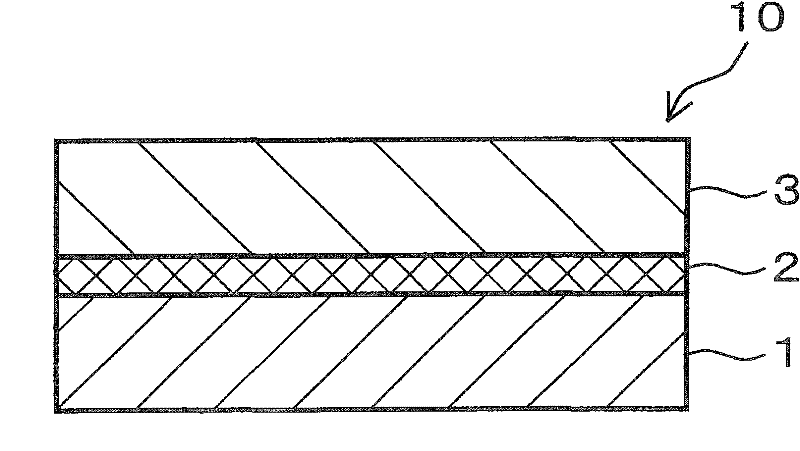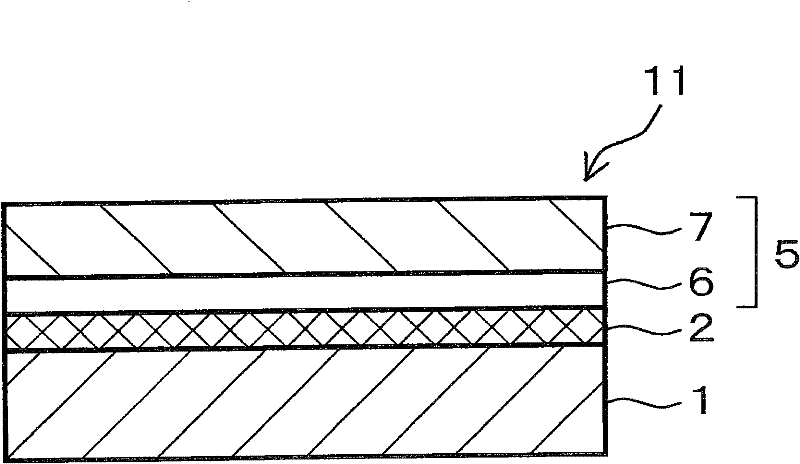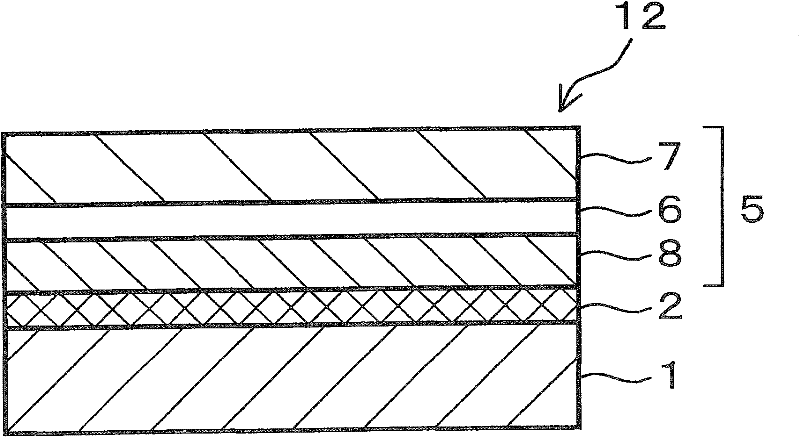Optical laminated body and manufacture method thereof
An optical laminate and adhesive layer technology, applied in chemical instruments and methods, optics, bonding methods, etc., can solve the problems of polarizing film rupture, polarizing plate peeling, lack of economy, etc. Good performance and thin-walled effect
- Summary
- Abstract
- Description
- Claims
- Application Information
AI Technical Summary
Problems solved by technology
Method used
Image
Examples
manufacture example 1
[0145] 380 parts of water and 100 parts of acrylic acid were added to a reaction vessel equipped with a cooling pipe, a nitrogen introduction pipe, a thermometer, and a stirrer, and the air in the device was replaced with nitrogen to make it free of oxygen, and the inner temperature was raised to 80°C. Then, 0.2 parts of potassium persulfate (polymerization initiator) was dissolved in 20 parts of water, and all of this solution was added to the reaction vessel. Furthermore, the internal temperature was kept at 79-81° C. for 6 hours, and finally water was added to adjust the concentration of polyacrylic acid to 5%. The viscosity of the obtained 5% polyacrylic acid aqueous solution was 52 mPa·sec.
manufacture example 2
[0147] 870 parts of water and 100 parts of acrylic acid were added to a reaction vessel equipped with a cooling pipe, a nitrogen gas introduction pipe, a thermometer, and a stirrer, and the air in the device was replaced with nitrogen to make it free of oxygen, and the inner temperature was raised to 80°C. Then, 0.3 parts of potassium persulfate (polymerization initiator) was dissolved in 30 parts of water, and the whole of the solution was added to the reaction vessel. Furthermore, the internal temperature was kept at 79-81° C. for 6 hours, and finally water was added to adjust the concentration of polyacrylic acid to 5%. The viscosity of the obtained 5% polyacrylic acid aqueous solution was 41 mPa·sec.
manufacture example 3
[0149] In the reaction vessel equipped with cooling pipe, nitrogen inlet pipe, thermometer and stirrer, add 415 parts of water, 100 parts of acrylic acid and 9.5 parts of itaconic acid, replace the air in the device with nitrogen to make it free of oxygen, and make the inner temperature Warm up to 80°C. Then, 0.2 parts of potassium persulfate (polymerization initiator) was dissolved in 23 parts of water and the whole of the solution was added to the reaction vessel. Furthermore, the internal temperature was kept at 79-81° C. for 6 hours, and finally water was added to adjust the concentration of the acrylic acid / itaconic acid copolymer to 5%. The viscosity of a 5% aqueous solution of the obtained acrylic acid / itaconic acid copolymer was 27 mPa·sec.
PUM
| Property | Measurement | Unit |
|---|---|---|
| thickness | aaaaa | aaaaa |
| thickness | aaaaa | aaaaa |
| thickness | aaaaa | aaaaa |
Abstract
Description
Claims
Application Information
 Login to View More
Login to View More - R&D
- Intellectual Property
- Life Sciences
- Materials
- Tech Scout
- Unparalleled Data Quality
- Higher Quality Content
- 60% Fewer Hallucinations
Browse by: Latest US Patents, China's latest patents, Technical Efficacy Thesaurus, Application Domain, Technology Topic, Popular Technical Reports.
© 2025 PatSnap. All rights reserved.Legal|Privacy policy|Modern Slavery Act Transparency Statement|Sitemap|About US| Contact US: help@patsnap.com



